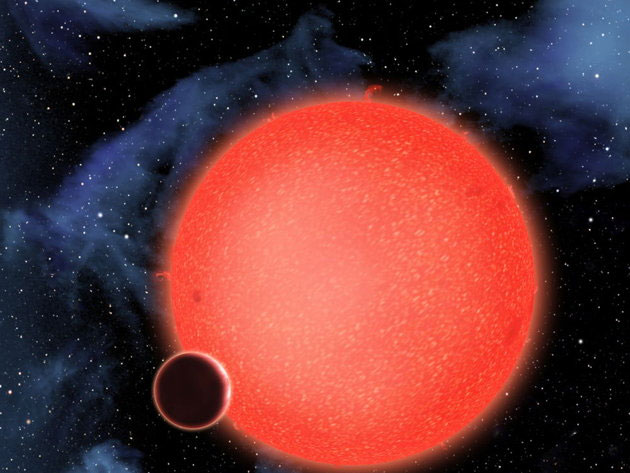Discover planet full of water
Astronomers have discovered a planet outside the Solar System that can hold more water than Earth.
>>>Discover more "future houses" for humankind
BBC said, the planet, named GJ 1214b , was discovered in December 2009 by underground telescopes but astronomers only knew it was bigger than Earth and smaller than Jupiter. It is located in the constellation Ophiuchus and is 40 light years from the earth. The latest data sent by Hubble Space Telescope shows that it is very likely that water accounts for a significant proportion of the material composition of GJ 1214b.
"GJ 1214b is not like any other planet we have ever known. It is possible that a large part of its material is water," said Zachory Berta, a researcher at the Smithsonina Astrophysics Center at Harvard University. in the US, speak.

GJ 1214b revolves around a red dwarf at a distance of two million kilometers.
The diameter of GJ 1214b is 2.7 times the diameter of the earth, but its mass is up to 7 times the globe. It revolves around a red dwarf star about two million kilometers away. At that distance the planet's surface temperature can reach 200 degrees Celsius.
In 2010, scientists published the results of the GJ 1214b atmosphere study. The results show that its atmosphere contains a vapor-like substance. It may be steam or a form of haze.
Berta said that if the predictions of GJ 1214b were proved correct, the planet had more water than the globe and its internal structure was also different from ours. Extremely high temperatures and extreme pressures on it can lead to the formation of unprecedented human forms such as hot ice and super liquid water. GJ 1214b may be a representative of a completely new type of planet for humans.
Since GJ 1214b is only 40 light-years away from Earth, it will become the ideal observation object of the James Webb space telescope after the glasses are launched in the next few years to replace the Hubble telescope.
The existence of liquid water and moderate surface temperatures are two of the necessary conditions for life to form and grow on planets.
- The universe is full of earth
- Discover planet 'wick button'
- Water turns out to be full of our galaxy, and so is life
- Detecting water on a distant planet
- Detecting water on the planet 179 light-years from Earth
- Detect a significant amount of water in a strange planet
- Detected one more planet with water outside the solar system, the size of Jupiter
- Detecting water in a strange planet's atmosphere
- Full Moon facts - Full moon you may not know yet
- Discover a human planet that can live
- Discover the giant planet with weird orbits
- Scientists confirm that the
 Van Allen's belt and evidence that the Apollo 11 mission to the Moon was myth
Van Allen's belt and evidence that the Apollo 11 mission to the Moon was myth The levels of civilization in the universe (Kardashev scale)
The levels of civilization in the universe (Kardashev scale) Today Mars, the sun and the Earth are aligned
Today Mars, the sun and the Earth are aligned The Amazon owner announced a secret plan to build a space base for thousands of people
The Amazon owner announced a secret plan to build a space base for thousands of people